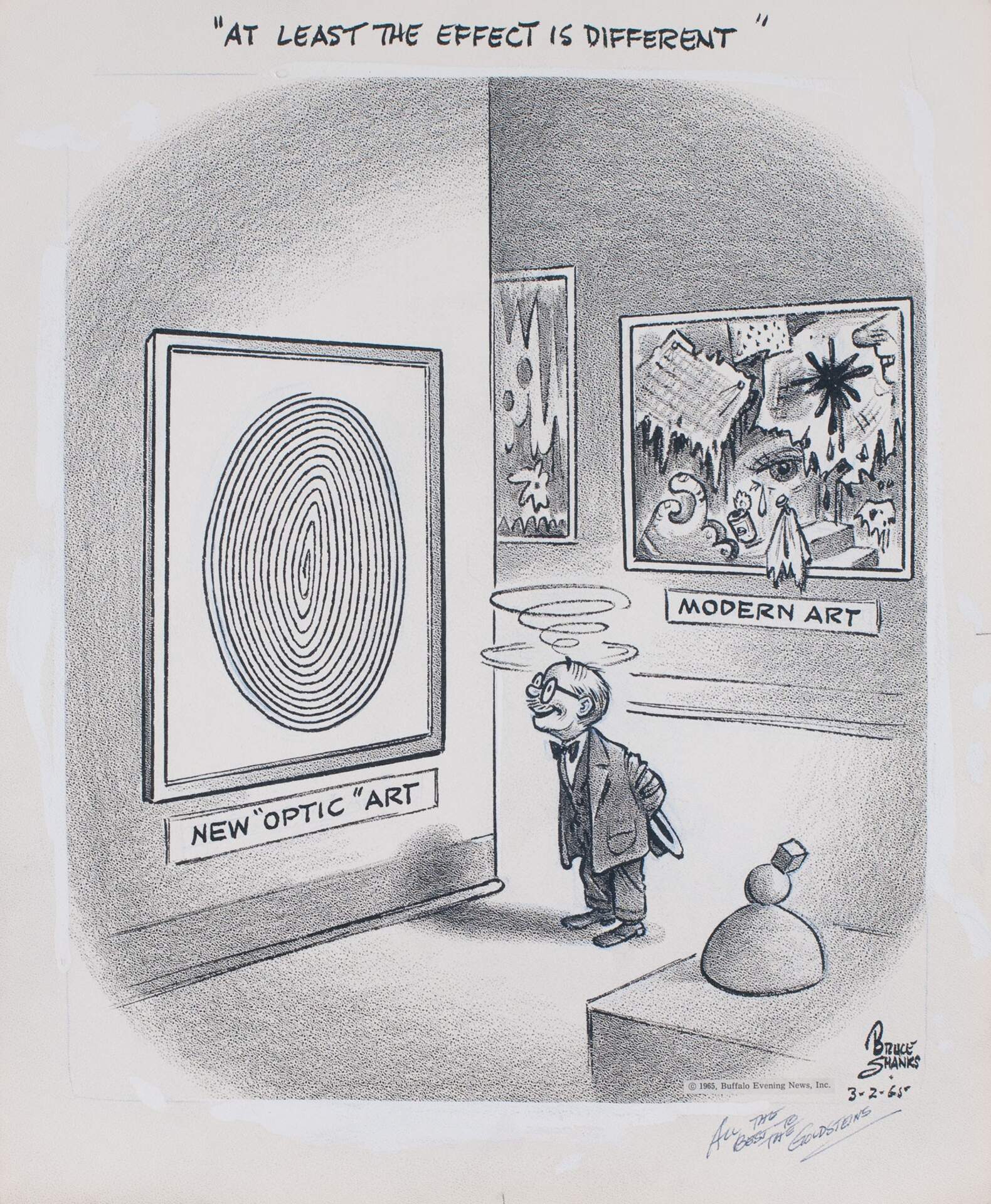
Bruce Shanks (1908-1980), At Least the Effect is Different, March 2, 1965; Burchfield Penney Art Center Collection, Gift of the Buffalo Evening News, 1976
The More that Things Change, The More They Stay the Same
The Political Cartoons of Bruce Shanks from the 1960-70s
Past
Oct 23, 2010 - May 29, 2011
Political cartoonists today carry on a centuries-old tradition, presenting issues of the day in concise visual commentary. Bruce Shanks (1908-1980), a Pulitzer Prize-winning journalist, was political cartoonist for The Buffalo News from 1951-1974. His commentary covered areas of local and international importance, including Middle East politics, the environment and local and national government. Now, decades later, those themes continue to resonate with surprisingly little change. More than 45 years since the earliest work in this exhibition was printed in The Buffalo Evening News, the only substantial difference is who – not what – was featured. The topics relevant then are just as relevant today, for better or worse.
For example, a selection of works from 1962 addresses the way that politicians and political parties try to sway the populace. President John F. Kennedy had been in office for a year-and-a-half, and the United States was heading into a mid-term election (often seen as a populace assessment of the current president). As was just experienced in the 2010 elections, parties vied to present themselves as more “in touch” with voters’ concerns, often polarizing issues to make the choices seem extreme.
Throughout the later 1960s and early 1970s, the politics of the period were tumultuous. Our country’s involvement in Vietnam then mirrors the struggles of U.S. foreign policy today, with the wars in Iraq and Afghanistan. Even political shifts from one conflict to another are highlighted in the piece, Hold Everything! (1967), which mocks the conflict strategist as he carries his chair from Vietnam to the Middle East, fleeing one failure to address the Six Day War between Israel and Egypt, Jordan and Syria. This conflict resulted in the control of the Gaza Strip, Sinai Peninsula, West Bank and East Jerusalem shifting to Israel and has been a continuous source of tension and war in the Middle East ever since.
One of the great strengths of a political cartoonist’s work, too, is the assessment of local issues. The Burchfield Penney Art Center’s collection of Shanks’ works is impressive with cartoons examining downtown development and the local environment. His images of the destruction of a building at the Buffalo waterfront in 1966 (16 years after the destruction of the Larkin Administration building) helps us understand that the issues surrounding appropriate approaches to Bass Pro, Canalside or any redevelopment efforts are really ongoing conversations still searching for suitable, workable answers.
The 1976 donation by The Buffalo Evening News of more than 1,000 of Shanks’ cartoons to the museum was as valuable as the meaning contained in these works, illustrating how pertinent issues of decades past linger today. By revisiting them, presented with humor and irony, we can better understand what drives not just one person’s perspective, but our community’s – and perhaps, too, this opportunity to look back will provide much-needed insight as we move forward.